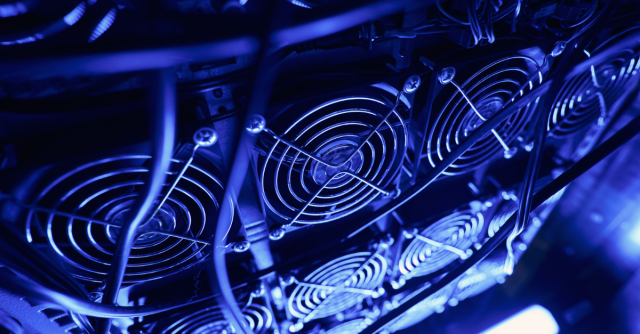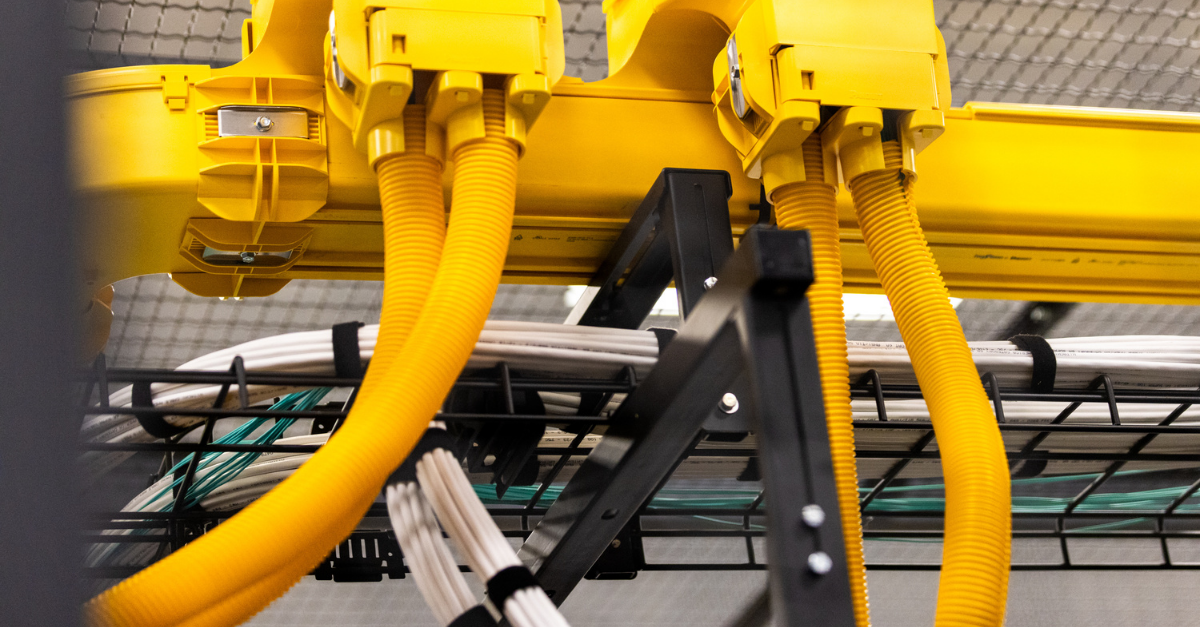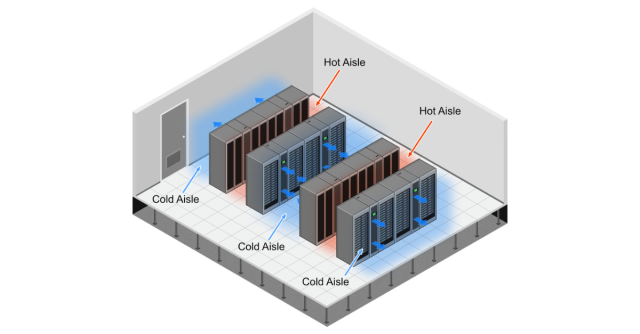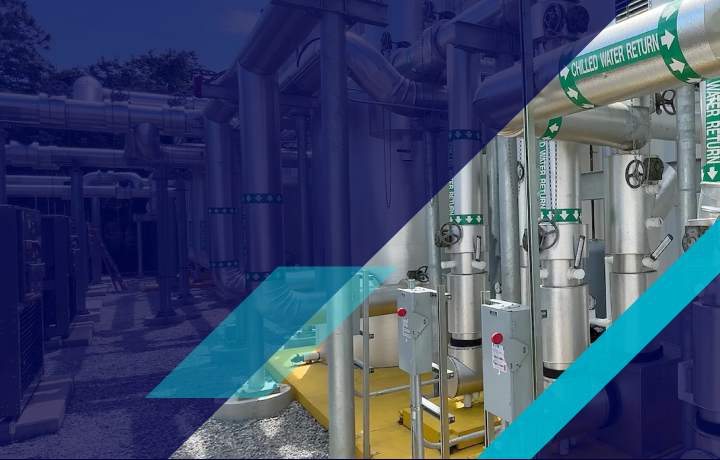Data center cooling systems: Everything you need to know
A data center needs to be cooled to reach its most energy-efficient state. Learn how data center cooling improves performance and avoids downtime and unforeseen issues.

We have covered what is a data center and what is colocation, but what is data center cooling? Data center cooling is fundamental to ensuring data centers operate properly so organizations can conduct business without interruption. However, digital transformations and the sharp and continued uptick in data creation and powerful processing require data centers to house a growing number of servers that generate tremendous heat. Cooling these facilities and protecting the business-critical equipment within them is an ongoing concern for colocation providers. Yet, more than simply cooling the data center is required. With data center energy consumption at approximately 1-1.5% of total U.S. electricity use—up to 40% of which is dedicated to cooling—operators must balance temperature management that supports seamless operations with sustainability and the bottom line.
What is data center cooling?
Data center cooling removes excess heat and humidity from data halls where mission-critical equipment operates. These servers produce massive heat, especially as organizations increasingly integrate advanced technologies into their operations. Consider the heat a personal computer radiates after working for hours. Now multiply that by thousands of high-powered, densely packed servers conducting intense processing, 24x7x365. Controlling data center temperature and humidity ensures servers and other critical IT infrastructure do not overheat and malfunction.
How are data centers cooled?
Data center cooling involves replacing hot air with cooler air. While this sounds straightforward, there are multiple approaches to this critical task—and new techniques are continually introduced to create more energy-efficient, cost-effective data center facilities that can support even the most complex colocation strategies.
Types of data center cooling
Air cooling. Traditionally, data center cooling has relied on air cooling, which utilizes raised flooring and computer room air conditioners (CRAC) or computer room air handlers (CRAH) to regulate temperatures. Raised flooring creates a space between the data center hall floor and the facility’s concrete floor to accommodate water-cooling pipes and support improved airflow.
Air cooling involves exhausting hot air into the outdoors while bringing in outside air that is cooled by CRAC or CRAH units before pushing it through the raised floor tiles and back into the data halls. CRACs cool air like traditional home air conditioners, using fans to move the warm air across refrigerant-filled cooling coils to remove excess heat. CRAHs operate similarly; however, the cooling coils are filled with water rather than refrigerant. While this is a long-standing cooling method, it needs more efficiency as the cooling units consume significant energy, and cold air delivery is less targeted than other cooling techniques. This also makes it less practical for higher-density deployments.
Free cooling. Free cooling is a form of air cooling that takes advantage of the naturally cool outdoor air in colder climates. Like traditional air-cooling models, hot air is vented outside the facility. However, pulling in already cold air avoids using CRACs/CRAHs for more energy-efficient cooling.
Hot/cold aisle containment. Hot/cold aisle configurations support more effective and efficient air cooling. By organizing racks in alternating rows—one of which faces the fronts of racks toward each other and the other that face the backs of racks toward each other—this solution creates “hot aisles” and “cold aisles.” The hot aisles contain the warm air exhausted from the back of the racks, while the cold aisles allow newly cooled air to enter the cold intake panels at the front of the racks. In this model, warm air from the hot aisles is cooled by CRACs or CRAHs and then dispersed into the cold aisles. By isolating the hot and cold air, this strategy delivers a more consistent temperature that improves cooling efficiency and overall energy consumption.
Direct evaporative cooling. This method uses water and evaporative mats to manage temperature and humidity. Exposing the wet mat to hot air evaporates the water from the pad, cooling the air in the process. While this solution eliminates CRACs/CRAHs from the cooling process—making it more energy efficient than traditional air cooling—it utilizes a substantial amount of water, raising other data center sustainability concerns.
Liquid cooling. While air cooling consumes vast amounts of power, modern liquid cooling technologies offer a more energy-efficient and targeted approach to data center cooling.
The two main liquid cooling models are:
Liquid immersion cooling. This solution submerges hardware in a pool of non-conductive, non-flammable dielectric liquid. The fluid draws out the heat generated by the server, vaporizing and then condensing it to cool the hardware. This method of server cooling is more efficient than air-based cooling and better supports high-density deployments and intense computing requirements, reducing carbon emissions and water use.
Direct-to-chip liquid cooling. According to the Uptime Institute Global Survey of IT and Data Center Manager 2022, 36% of data center managers expect direct liquid air-based cooling systems to significantly improve data center efficiency over the next five years. This strategy employs tubing that guides nonflammable dielectric liquid coolant directly to the processor to absorb heat, vaporizing and emitting through the tubing. By directly cooling the processor, this approach offers highly effective cooling that supports lower power usage effectiveness (PUE) than other cooling technologies.
Is data center cooling important?
The short answer is yes. Data center cooling ensures servers do not overheat and cause equipment failures and downtime that can impact organizational operations, profitability, and productivity. Organizations are increasingly relying on digital IT transformations to gain competitive advantages. As artificial intelligence (AI), machine learning, the Internet of Things (IoT), powerful data analytics, and other advanced technologies are leveraged, effective data center cooling will become even more crucial to reduce the heat these technologies produce and ensure the operational integrity and availability of the equipment. Carefully managing data center temperature can prevent performance and reliability issues and ensure servers function efficiently.
Benefits of data center cooling
Regulating data center temperature and humidity offers a variety of benefits.
Improve server reliability
A digital world demands unyielding uptime. Excessive heat in the data center can lead to underperforming servers and downtime—an expensive consequence for any organization. An effective cooling strategy can help ensure that equipment does not overheat and malfunction. This is essential to support customers. Additionally, as organizations continue to face supply chain disruptions, the ability to replace failed equipment can be delayed, putting organizations in a less-than-ideal situation.
Achieve greater efficiency
Maintaining appropriate data center temperature and humidity improves the efficiency with which the facility hardware operates. Equipment operating in an insufficient environment will need help to perform as expected, introducing more heat into the environment and downgrading overall operational effectiveness. Modern cooling technologies that offer more targeted cooling, improve airflow or minimize power use can also improve data center facility cooling efficiency to bolster PUE, water usage effectiveness (WUE), and other factors integral to fostering sustainable practices and enhanced cost efficacy.
Support longer equipment life spans
While cooling can be expensive, so can the cost of frequently replacing equipment before the end of its expected lifecycle. Regular exposure to excessive heat can result in early equipment failures. Through proper cooling, colocation providers can support longer life spans so customers can replace equipment less frequently and better control capital expenditures.
Data center cooling best practices
The continued focus on digitalization and sustainability will make data center cooling efficiency a priority for colocation providers. The following best practices can help organizations improve cooling efficiency amidst intensifying processing demands.
Organize and optimize the rack
Appropriately arranging the cabling connecting to servers within a rack can improve airflow and limit heat buildup. Blanking panels in empty rack spaces can also block hot air from seeping into the cold aisle.
Maintain an optimal temperature
While maintaining a server room in a sufficiently cooled environment is paramount to avoid overheating and ensure system performance and availability, over-cooling the facility can introduce energy inefficiencies. The American Society of Heating, Refrigerating, and Air-Conditioning Engineers (ASHRAE) recommends data center temperatures between 64.4°F and 80.6°F. However, new research suggests that equipment can operate effectively at higher temperatures, thus requiring less cooling. This introduces several benefits, from improved energy efficiency and PUE metrics to lower energy costs and the need for fewer cooling units.
Determining the highest temperature that enables effective operations is critical to optimizing cooling efficiency, as every degree equates to lower power consumption and more cost savings. The bottom line is that the “right” temperature depends on the individual facility, the equipment, and various other factors.
Introduce hot/cold aisle configurations
Organizing racks into hot and cold aisles separates cold and hot air to promote cooling efficiency. This simple configuration greatly reduces energy use and controls expenses.
Conduct ongoing monitoring and maintenance
Regardless of a colocation provider's cooling technology, continuous monitoring and maintenance of the data center cooling systems are crucial to enforcing effective operations. Regular oversight and tracking can provide early warnings, allowing colocation providers to identify hot spots, overly cooled areas, or slow temperature and humidity escalations that may signify an issue. This enables data center technicians to rectify the problems before they impact operations to support uptime and deliver continued efficiency improvements. Data Center Infrastructure Management (DCIM) tools are one option to help data center operators collect vital information on temperature and humidity levels and trends.
Continued investments
Whether a colocation provider operates a legacy data center or is building a new facility, continuing to invest in cooling technology that can improve energy efficiency, cost, performance, and uptime is essential. Legacy facilities can be retrofitted with newer technology or hot/cold aisle configurations to achieve these enhancements, while new builds can be designed with the most innovative cooling techniques.
What is the best cooling system for a data center?
Identifying, implementing, and managing a data center's most suitable cooling solution is essential to ensure its long-term efficacy. However, the “best” system depends on the individual data center. It is contingent on several criteria: location, facility age, power density capabilities, data center size, regional climate, budget, etc.
Finding and implementing the most appropriate strategy will be essential as data center power density capabilities—and their associated heat—continue to climb. These more intense deployments will require alternative cooling options to traditional air and cooling methods. Additionally, the best cooling option may be rooted in an organization’s commitment to sustainability. Cooling technology that helps an organization reduce its carbon footprint and improve its energy efficiency will likely be an essential consideration.
The future of data center cooling
Like all technologies, data center cooling is evolving to improve sustainability and cost-effectiveness. Several technologies and factors will be integral to the future of the data center cooling system.
AI will promote automation
AI is helping to deliver more efficient, effective cooling systems. Using AI and IoT sensors, data centers can monitor facility temperature and humidity levels in real-time to identify issues and automate decision-making to regulate facility temperature and humidity better and proactively ward off potential problems. This automation also offloads data center teams from manual tasks, allowing them to focus on other critical issues. Data center operators can strengthen current cooling capabilities by integrating AI with existing cooling technologies. This is particularly beneficial in legacy data centers.
Sustainability will continue to be a business priority
Data center cooling can take a toll on the environment, especially in the face of mounting heat production. As organizations focus on sustainable practices, utilizing colocation providers incorporating modern cooling technology and best practices to minimize carbon emissions and power and water consumption can help organizations lessen their environmental impact. This can include energy-efficient options such as hot/cold aisle containment, free cooling, and liquid immersion. The new data center will adopt more efficient and sustainable data center cooling products and techniques, including water-free cooling designs to address water scarcity.
The U.S. government is also investing in the future of data center cooling. In 2022, the Department of Energy (DOE) announced up to $42 million in funding to help develop high-performance, energy-efficient data center cooling technologies.
Facilities will operate at higher temperatures
More data centers will also begin raising their standard operating temperatures as this method can lower energy usage without detrimentally affecting server performance. Meta, for example, has increased its data hall temperatures to 90°F. Any temperature increase minimizes the amount of necessary cooling to reduce energy consumption and energy costs. Next-generation servers are also designed to operate at higher temperatures to support this trend.
While this approach offers some noteworthy benefits, not all IT environments can tolerate higher temperatures. Data center operators must thoroughly assess their facilities' most appropriate temperature range.
Flexential sustainable, and efficient data centers
The Flexential fleet of energy-efficient data centers features effective cooling technologies promoting consistent temperature and humidity levels in even the most demanding environments. The data center provider continues to retrofit its legacy facilities with improved cooling solutions to strengthen energy efficiency while protecting critical IT systems. Its 4th and 5th generation data centers are designed and constructed with industry-leading features, including PUEs as low as 1.25, a WUE of zero, and NextGen SuperCRAC cooling for maximum efficiency. Its reliable climate-optimized cooling strategy also leverages free cooling when possible. These factors position its newest deployments among the world's most energy-efficient multi-tenant data centers.
To ensure the reliability of its cooling solutions, Flexential also utilizes multiple cooling redundancies to provide the resiliency of its cooling strategy. Additionally, the company builds facilities in areas that support sustainable practices. Its tier 2 data centers, including Louisville, Charlotte, Cincinnati, and Atlanta, feature York air-cooled 320+ ton chillers for reduced energy costs. Louisville also offers energy-efficient EC fans in precision cooling units. Additionally, hot/cold aisles containment is used across its national portfolio of 41 facilities in 19 markets.
Ensure peak cooling of your critical infrastructure with Flexential efficiency-optimized data centers. Schedule your consultation today.








